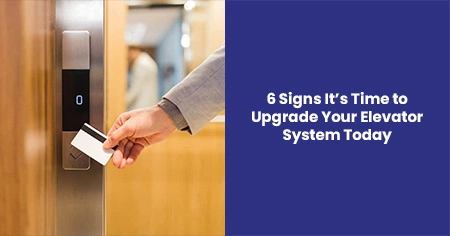Safety Concerns
Safety should always be a top priority when it comes to any building system, especially elevators. Elevators that exhibit concerning behaviors, such as unusual noises, jerky movements, or inconsistent door function, can be a sign of underlying mechanical issues that could pose a safety hazard. Older elevators may not include the latest safety features, such as emergency communication systems, advanced braking systems, or modern door protection technology. As safety regulations evolve, older systems may no longer meet required safety standards, potentially putting users at risk.
By upgrading your elevator, you are investing in safety features that provide peace of mind to your building’s occupants. Investing in new systems that incorporate responsive elevator service can enhance safety protocols and thus protect users from accidents and injuries. ems and improved fire-resistant materials, making them much safer for everyone involved. Ensuring the safety of your elevator system is paramount to protecting both its users and your building’s reputation.
Increased Downtime and Frequent Breakdowns
One of the clearest indicators that your elevator needs an upgrade is an increase in downtime and frequent breakdowns. If your elevators are often out of service, it can cause major disruptions to your building's day-to-day operations. Frequent breakdowns can lead to frustration for residents or workers, who may have to rely on stairs or wait extended periods for service. As elevators age, they require more maintenance, and parts begin to wear out. Older systems might struggle with the increasing demands of high-traffic buildings, leading to costly repairs.
Modern elevators are designed with advanced technology that increases reliability and reduces the frequency of breakdowns. If your elevator system is constantly requiring repairs, it may be a sign that upgrading to a newer, more reliable model would benefit both your budget and your building’s functionality.
Inefficient Performance
Efficiency is a key factor in any elevator system, especially in busy buildings where people need to get from one floor to another quickly. If you notice your elevators are becoming increasingly sluggish or struggle to keep up with building traffic, it’s a strong sign that it's time for an upgrade. A noticeable lag in response times or slower-than-usual travel speeds can negatively impact the user experience, leaving people waiting longer than necessary.
An efficient elevator system improves user satisfaction and the operation of your building. Reduced wait times and faster performance mean more people can use the elevators without disruption, resulting in a smoother flow of traffic throughout your building.
Lack of Accessibility Features
Accessibility is no longer an optional feature in modern elevator systems, it is a necessity. As society continues to prioritize inclusivity, buildings need to ensure their systems accommodate individuals with various needs. It’s time to consider an upgrade if your elevator system lacks accessibility features, such as audio instructions, large and easy-to-press buttons, or ample space for wheelchairs and other mobility aids.
Many codes and regulations around accessibility have evolved, and current standards require elevators to be accessible to all individuals, including those with disabilities. Upgrading your elevator system ensures that you meet legal requirements while providing equal access to all occupants. This helps you comply with current accessibility laws and demonstrates your commitment to creating a welcoming, inclusive environment for all building users.
Energy Inefficiency
Energy efficiency has become a top priority for both businesses and homeowners. If your elevator system is older, it is likely consuming far more energy than modern counterparts. Outdated elevators often use outdated motors and hydraulic systems, which tend to waste energy and contribute to higher utility bills.
Modern elevators are built with energy-efficient technology that can significantly reduce energy consumption. These new systems feature technologies like regenerative drives that recapture and reuse energy during the elevator's operation. Upgrading to a more efficient system can contribute to your building's sustainability efforts, reducing its carbon footprint and helping you align with eco-friendly building standards.
Outdated Technology
Technological advancement means that today’s elevators come with a wide range of innovative features and smart technology options that were not available in older systems. If your elevator’s control system is outdated, lacks smart features, or is difficult to integrate with other building management systems, it could be a sign that it’s time for an upgrade. Modern elevators offer a range of intelligent features, including touchscreen controls, predictive maintenance capabilities, and smart building integration.
These systems can be seamlessly connected to your building’s central management system, making it easier to monitor and maintain the elevators’ performance. Features like predictive analytics can help identify potential issues before they become major problems, preventing costly repairs and system failures. Upgrading to a system with advanced technology can significantly improve the user experience, increase efficiency, and reduce the risk of unexpected malfunctions.








